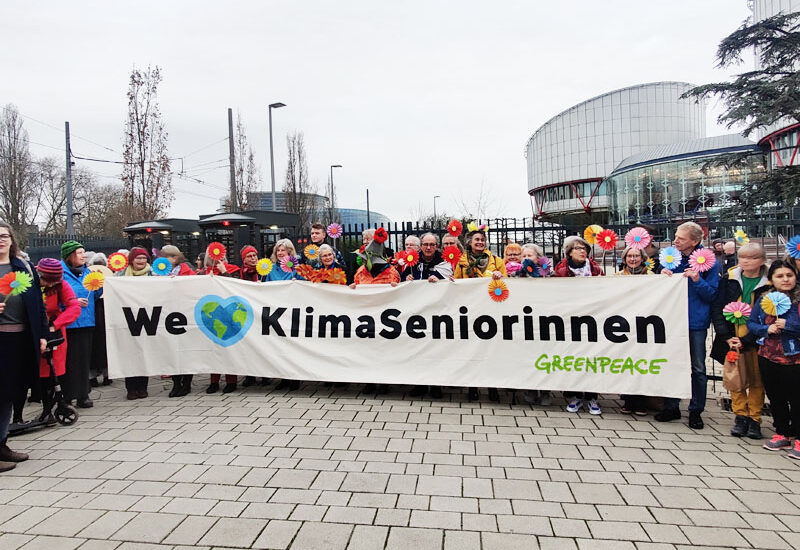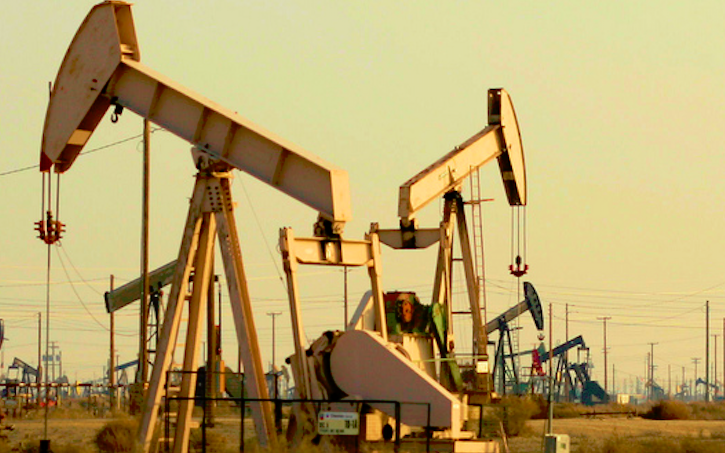Much has been said already about the decision in KlimaSeniorinnen v. Switzerland granted on Apr 9, 2024 by the European Court of Human Rights (ECtHR or the Court). The Court’s decision was groundbreaking in that it established an obligation to mitigate greenhouse gas (GHG) emissions as a human rights duty, required countries to establish a carbon budget, and arguably established a new right under the European Convention on Human Rights (ECHR) (see here, here, and here). Still, there is much more to discuss regarding its broader implications for climate litigation. This blog post discusses the relevance of the KlimaSeniorinnen case to the discussion of vulnerability and intersectional gender in climate litigation. To date, very few climate cases have addressed the gendered dimensions of climate change and there was some hope that this case would. However, as this post argues, despite the fact that KlimaSeniorinnen is a case about the impacts of climate change on elderly women, the Court fails to meaningfully engage with gender as a determinant of the harms suffered by individuals. Gender remains an overlooked issue in climate litigation.
Women are distinctively and intersectionally vulnerable to climate change
While climate change impacts all of us, our social identities – and the experiences, exclusions, and opportunities that result from those identities – radically change the nature, timing, and extent of the harm we suffer as a result of climate impacts. Factors such as gender, age, disability, location, sexual orientation, education, and poverty, among many others, amplify the risks faced by these groups.
Historical and ongoing practices of discrimination against certain social groups have rendered those groups more vulnerable to the impacts of climate change and less able to adapt to changing conditions and temperatures. Vulnerability to climate change impacts is particularly pronounced among those who occupy multiple social identities and have been the target of oppressive or exclusionary practices. The intersection of race and gender, for example, or of economic status and disability, creates unique experiences of discrimination, multiple burdens, and distinctive vulnerabilities to climate change. Women, gender-diverse and non-binary groups often find themselves at the intersection of various social and structural inequalities related to their multiple identities.
Nonetheless, very few climate cases have meaningfully addressed or focused on the gendered impacts of climate change or the intersectional oppressions that make women, gender-diverse, and non-binary groups vulnerable to climate harm. As one of the many essential paths to drive climate action, climate litigation can be a powerful instrument for addressing gendered impacts, integrating useful definitions of gender into states’ climate responses, and engaging with women, girls, and gender-diverse and non-binary groups about their particular needs and goals.
The relative scarcity of gender-based arguments in climate litigation to date makes the KlimaSeniorinnen case even more significant. The case highlights the intersectional nature of gendered identities and vulnerabilities. The applicants were women over the age of 70 and their representative association. Each individual applicant argued that they – as older women – were more severely impacted by climate change (and, in particular, heatwaves) than the rest of the population. The combination of their gender and age, they argued, made them uniquely at risk of the impacts of temperature increases. The applicants produced evidence to show that “overall, women aged above 75 (such as applicants nos. 2-5) were at greater risk of premature loss of life, severe impairment of life and of family and private life, owing to climate change-induced excessive heat than the general population” (para. 67).
How the court addressed gendered vulnerability
In its judgment, the ECtHR provides a detailed overview of the evidence and law on the differentiated impacts of climate change. The ECtHR considered, for example, the 2019 report of the Independent Expert on the enjoyment of all human rights by older persons, which stated that “in emergencies brought on by climate change impacts, older women might be viewed as a burden and therefore be vulnerable to abuse and neglect … The specific risks and impacts for older women are, however, generally invisible” (para 170). The Office of the High Commissioner for Human Rights (OHCHR) has also found that “both ageing and climate change have differential effects when it comes to gender” (para 185). The OHCHR found that more older women are likely to live alone, experience higher levels of poverty, and face disproportionate health risks, including from air pollution harms and extreme heat events. Gender discrimination and unequal access to resources and power make older women particularly vulnerable, and they are more likely to be viewed by others as a burden and suffer abuse or neglect (para 185).
The ECtHR also recalled the 2022 Human Rights Council Resolution 50/9 on human rights and climate change, specifically where it calls States to adopt “a comprehensive, integrated, gender-responsive, age-inclusive, and disability-inclusive approach to climate change adaptation and mitigation policies, consistent with the United Nations Framework Convention on Climate Change and the objective and principles thereof” (para. 157). Similarly, General Recommendation No. 37 of the Committee on the Elimination of Discrimination against Women covered gender-related dimensions of disaster risk reduction in the context of climate change and the principles of the Convention on the Elimination of All Forms of Discrimination Against Women applicable to climate change disaster risk reduction (para. 177). Further, the ECtHR noted the 2018 Statement of the Committee on Economic, Social and Cultural Rights which, in its discussion of the Nationally Determined Contributions of States, found that human rights are implicated, including principles of gender sensitivity (para. 180).
Acknowledging that this is the first time the ECtHR has addressed the topic of climate change, the Court recognized the challenges of specifying a nexus between the source of harm and those affected by the harm, with the additional requisite that mitigation measures are (i) identifiable and (ii) available at the source of the harm (para. 415). As a polycentric issue, the Court noted that climate change policies involve “intergenerational burden-sharing” (para. 419).
Standing of Individual Victims
In the original Swiss case that led to the application to the ECtHR, Association of Swiss Senior Women for Climate Protection v. Federal Department of the Environment Transport, Energy and Communications (DETEC) and Others, the Swiss Federal Administrative Court held that the appellants’ rights had not been sufficiently violated to give them a cause of action. In particular, the court found that Swiss women over 75 were not exclusively affected by climate change. In making that decision, the Swiss Court assessed whether the applications were affected differently compared to the general public, i.e., whether they were particularly affected (para. 7.2) to an extent that goes beyond that of the general public (para. 7.4.1). The Court listed several impacts of climate change on people, animals, and plants and then noted that “the group of women older than 75 years of age is not particularly affected by the impacts of climate change.” It further explained that “[a]lthough different groups are affected in different ways, … it cannot be said from the perspective of the administration of justice the proximity of the appellants … was particular, compared with the general public” (para. 7.4.3). Upon appeal, the Swiss Supreme Court concluded that plaintiffs’ rights had not been affected with sufficient intensity and that the remedy they sought must be achieved through political rather than legal means.
The ECtHR seems to have followed a similar approach in analyzing victimhood of the individual applicants. While the ECtHR allowed an association to bring a climate case, it rejected the individual application of the four women due to a failure to establish victimhood. As noted by Arntz and Krommendijk, the threshold for individual plaintiffs remains especially high, with the ECtHR requiring individual applicants to meet the following two criteria: (i) high intensity of exposure to the adverse effects of climate change with significantly severe adverse consequences of governmental (in)action and (ii) a pressing need owing to the absence or inadequacy of reasonable measures to reduce harm (para. 527). Since the applicants had failed to show “a critical medical condition” (para. 533), they did not have victim status.
A Missed Opportunity
This aspect of the decision is disappointing. As Angela Hefti argues, “individual access to the ECtHR remains crucial in future climate cases since underrepresented groups may not be able to establish their own association across the 46 Council of Europe member states.” A high threshold to establish victim status has the unavoidable effect of excluding underrepresented voices in decision-making. Welcoming such voices has been one of the most important advances in climate litigation, with a growing number of cases brought by marginalized groups, including children, youth, and Indigenous Peoples, who are often excluded from law-making processes and mainstream policy discussions. While not everyone should be able to claim victim status, it is crucial that certain individuals can. This is essential to ensure access to justice (and other procedural environmental rights) in the context of climate change.
While the Court discussed extensive evidence on the vulnerability of women over 75 years of age, repeatedly finding scientific evidence that this group is suffering and dying in rising temperatures and heatwaves, there is no mention of this in the Court’s ruling and no duty created for States to better understand or address these impacts. This outcome is, perhaps, unsurprising given the remedies requested by the applicants, who sought state-level climate policy change, beneficial to the entire population, rather than remedies that specifically addressed the harm suffered as a result of age and gender. Still, it is discouraging that after carefully assessing the evidence of disproportionate impacts, the Court simply fails to engage with their legal consequences.
Despite recognizing that victim status must be interpreted in a flexible and evolutive manner (para. 461), the Court rejected each individual applicant’s claim arguing that the alleged omissions in this case could affect indefinite numbers of persons (para. 480). In particular, the Court invoked the climate change context as one that affects “everyone, one way or another and to some degree” (para. 483). As a result, the individual claims could, in the Court’s opinion, contradict the exclusion of actio popularis from the Convention mechanism. The Court also acknowledged that members of society who are potentially most affected by climate change could be considered at a distinct representational disadvantage. However, in the Court’s opinion, climate change impacts affect everybody, and as a result could not be used as a limiting criterion (para. 485).
The high threshold for individual standing meant that the Court did not meaningfully engage with the question of how social determinants (gender and age) should be assessed or understood in the context of individual experiences of harm. The Court seems to acknowledge that gender and age render certain groups highly vulnerable to climate impacts but fails to recognize this as producing a higher intensity of exposure or a pressing need to ensure individual protection (478-488). The Court fails to recognize that vulnerability by virtue of intersecting social identities is not merely a collective concern, but manifests in individual harm. This failure to translate social identity vulnerabilities into individual experiences seems to treat the idea, affirmed by the Court, that the impacts of climate change are gendered as empty rhetoric. In doing so, the Court suggests that, at the end of the day, gender does not actually matter.
The judgment risks enabling and enforcing a dismissive and silencing denial of the claims of women. We see this in Marko Milanovic‘s comment on the case: “I’ve always found the argument that little old ladies in Switzerland are somehow especially affected by climate change to be entirely bogus. If they are affected, why wouldn’t I be – why would their interests matter more than mine (or anyone else’s), simply because they have fewer years left to live (well I hope) and are more affected by summer heat?”
The Court had the opportunity to engage with the differentiated and gendered impacts of the climate crisis and failed to do so. Even though climate change affects everyone, it does not affect everyone equally. As Hefti notes, the Court overlooked “the socially constructed impact of heatwaves.” Had the Court dealt with the particular and individual situation of the applicants from an intersectional and gender-conscious perspective, these vulnerabilities would have become apparent. The climate crisis calls for a more nuanced and revolutionary approach to law and legal institutions to account for the lived experiences of those particularly affected by its impacts. Failing to do so will only perpetuate power imbalances and oppressions.
Broader Structural Issues: A Matter of Climate Justice in Europe and Beyond
The Court’s interpretation of the notion of victim status is potentially a barrier to climate justice in at least two ways. First, it fails to consider the differentiated effects of climate change on different individuals, reducing recognition of the social determinants of climate harm to mere rhetoric. Second, it reinforces structural barriers to access to justice by historically marginalized groups. Children, youth, women, Indigenous and local communities are taking matters before the courts to demand the protection of their rights and the recognition of their particularly vulnerable situation. Grouping climate impacts altogether, without considering the differentiated degrees and ways in which people are affected, risks overlooking the root causes behind the disproportionate effects. This, in turn, risks reproducing oppressive dynamics in the adopted solutions to address the climate crisis. For example, women’s work tends to be highly implicated in climate solutions, with little to no consideration as to the needs and desires of said women.
Structural barriers are also reinforced when failing to acknowledge the differentiated impacts of climate change. An especially high threshold that does not incorporate a critical gender lens results in a too narrow understanding of victim status that does not consider prevailing local circumstances and individual vulnerabilities. Under a veil of universality, the specificities of marginalized groups and individuals that make them more vulnerable to climate change are overlooked.
Following the Court’s interpretation, many other applicants, and more broadly climate plaintiffs, might have difficulty accessing justice. Failing to engage with the disproportionate and differentiated ways historical oppressions determine vulnerability to climate change risks placing yet another burden on marginalized groups to access justice and remedies for climate inaction or inadequate action.
Finally, the failure to engage with the legal implications of the disproportionate impacts of climate change, while recognizing, from a scientific perspective, these same impacts, risk giving a false sense of success to the overall gender perspective in climate justice. The case has been widely reported as a “gender win,” since it was brought by women (see, i.e., here and here). While there are certainly successes in the overall decision and the reshaping of the narrative of women as victims, the missed opportunity in establishing the legal consequences of a violation of the rights of women in the context of climate change (i.e., the related responsibilities of States towards them and the remedies available) still lingers as a sore point in the decision.
Conclusion
The KlimaSeniorinnen case is, without a doubt, trailblazing. Its influence is likely to extend beyond the Court’s jurisprudence and reach other regional, as well as domestic jurisdictions. Further, it has the potential to influence the current advisory opinions proceedings before the international tribunals (International Court of Justice, International Tribunal on the Law of the Sea, and the Inter-American Court of Human Rights), helping clarify States’ obligations regarding climate change and the subsequent legal consequences. However, the lack of gender analysis of climate change impacts remains a concern. The climate crisis is gendered, but as of today, this aspect remains largely understudied and underaddressed in climate litigation despite the initial promises of KlimaSeniorinnen.







